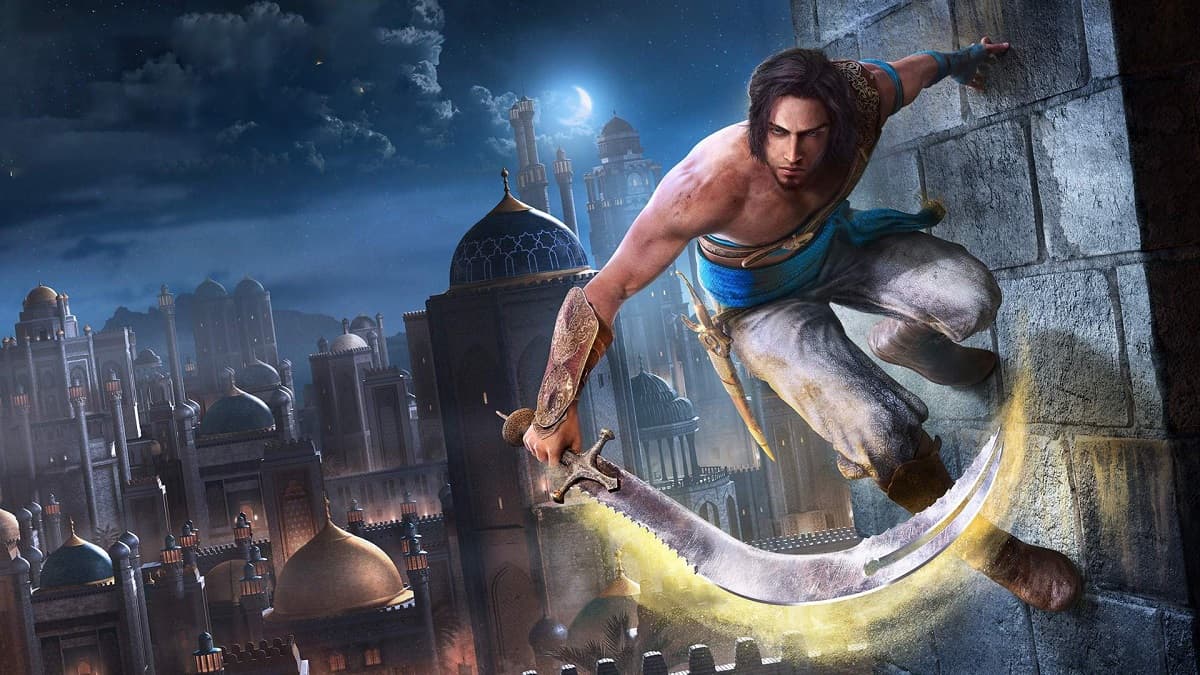The announcement of a remake for Prince of Persia: The Sands of Time at the Ubi Forward event in September should not have come as a surprise. Rumors of a new game featuring our plucky prince were rampant leading up the event, and leaks on the day of the announcement all but confirmed his return in a remake of the series’ hallmark game.
The original Prince of Persia: The Sands of Time was released in 2003 on the PlayStation 2, Xbox, Gamecube, and PC. Critically acclaimed, The Sands of Time spawned a trilogy with two great sequels, Warrior Within and The Two Thrones, and further games in the next generation.
However, a change in artistic direction toward an open-world format for 2008’s Prince of Persia didn’t resonate with fans as the previous trilogy did, and by the time 2010’s Forgotten Sands launched with the traditional formula, it had become clear that audiences were less interested in the Persia, with adventures like Assassin’s Creed and the Batman Arkham series proving to be bigger draws. Even a film adaptation starring Jake Gyllenhaal bombed at the box office, compared to Disney’s usual numbers.
It appeared that time in the prince’s hourglass had finally run out. But it’s important to remember that the reason a remake of The Sands of Time is in the works is that its influence is difficult to understate.
The original Prince of Persia trilogy, which included two 2D games (in 1989 and 1993) and a 3D adventure (in 1999), were enjoyable but fairly standard platforming affairs for their era. The games took much of their inspiration from platforming classics such as Pitfall, though their level design and control schemes were an influence on later adventure games such as Tomb Raider.
But it wasn’t until Ubisoft Montreal created The Sands of Time, the first game under the French publisher’s wing, that the series became a household name.
Playing as an unnamed Prince, you are thrust into a deadly adventure when the Sands of Time are released throughout a Persian Maharaja’s palace. Having caused all but the Prince, the villainous immortality-seeking Vizier, and the Maharaja’s daughter Farah to transform into a wave of sand monsters baying for blood, it’s up to you and the eccentric princess to stop the wack-job advisor from retrieving the Dagger of Time to finish the task.
Though the interactions between Farah and the Prince offered enough chuckles to keep your attention, the story was as you might expect from the game’s premise. But it leads you to the Dagger of Time, and this is part of what makes the game shine.
The core mechanics of the game were separated into two elements: puzzle platforming and waves of melee combat. Previous attempts to perfect platforming puzzles in 3D have been mixed. Super Mario 64 is one of the greatest platformers of all time, but it didn’t design star collection around puzzles as much as it did precision platforming. The original Tomb Raider series had a similar design philosophy to PoP but struggled to deliver consistent results with its tank-style controls, perhaps hampered by the limitations of the original PlayStation.
But The Sands of Time was able to expertly blend the elements of platforming and puzzling. The problem-solving wasn’t as simple as going from one platform to another. Solutions were scattered throughout large, open levels, and scaling the game’s grand apparatuses required careful planning.
At save points, brief visions offered a glimpse at the route you needed to take without revealing so much as to feel like hand-holding. And the Dagger of Time was an excellent tool that allowed you to rewind time if you made a mistake at any point, while also offering some combat utility via slowing down time and temporarily petrifying enemies.
Level verticality was also highly impressive. One of the game’s most simply designed yet outrageously fun sections asks you to scale down a room that’s five stories tall, and this type of setting is not a one-off. It’s a core element of the game’s design.
However, what really set it apart was how all of this was done so elegantly that it made the idea of a game revolving around parkour-style mechanics incredibly desirable. The fact that wall running and scaling, edge platforming, climbing up and down via wall-to-wall jumping, and even backflipping over enemies never got old is a testament to the expert level of execution.
Even with the fairly limited combat options, the flow of the platforming was also present in the fighting style, allowing you to flip and fly around enemies with such grace and grandeur that it elevated those sections high enough to look above their otherwise simple nature.
With all of this combined, The Sands of Time was the first notable instance of a game that felt more like a floating playground than a static building, and it is no surprise that it has influenced so many games after it.
Assassin’s Creed is the most obvious beneficiary of the free-flowing parkour style, as a game that started off as a spin-off to the Prince of Persia series and is directed by The Sands of Time lead Patrice Désilets. Meanwhile, the same philosophy helped pioneer the battle systems that power games such as the Batman Arkham series, Monolith Productions’ Middle Earth games, and future PS4 exclusive Marvel’s Spider-Man. There are even elements of the platforming in the likes of Naughty Dog’s Uncharted, which cranks up the blockbuster production on PoP’s foundations.
However, having recently replayed The Sands of Time myself, it’s clear that many elements of the game have aged poorly. The camera controls are more erratic than I remembered, and while the momentum-driven system can still make combat look fun, it’s painfully simple compared to modern adventures. It’s also looking its age, even if the slightly abstract art-style hides some ugly texturing, and it’s quite short compared to contemporary gaming standards, at just 8 hours or so.
However, the platforming is still as fun as ever, and it serves as a reminder of just how good games that can recreate the same flow can be.
The initial reaction to the remake’s trailer has been somewhat negative, with most of the criticism leveraged at the visuals, but it’s important to remember that the team working on the game has little game development experience and is based in India, a country that is not known for AAA game production.
But the framework is already there, with a new generation of gamers to bring the tale to standing by. If the remake can capture the essence of the original and prove to be a successful retelling, maybe it will be the prince’s time once again.







Published: Sep 16, 2020 02:21 pm